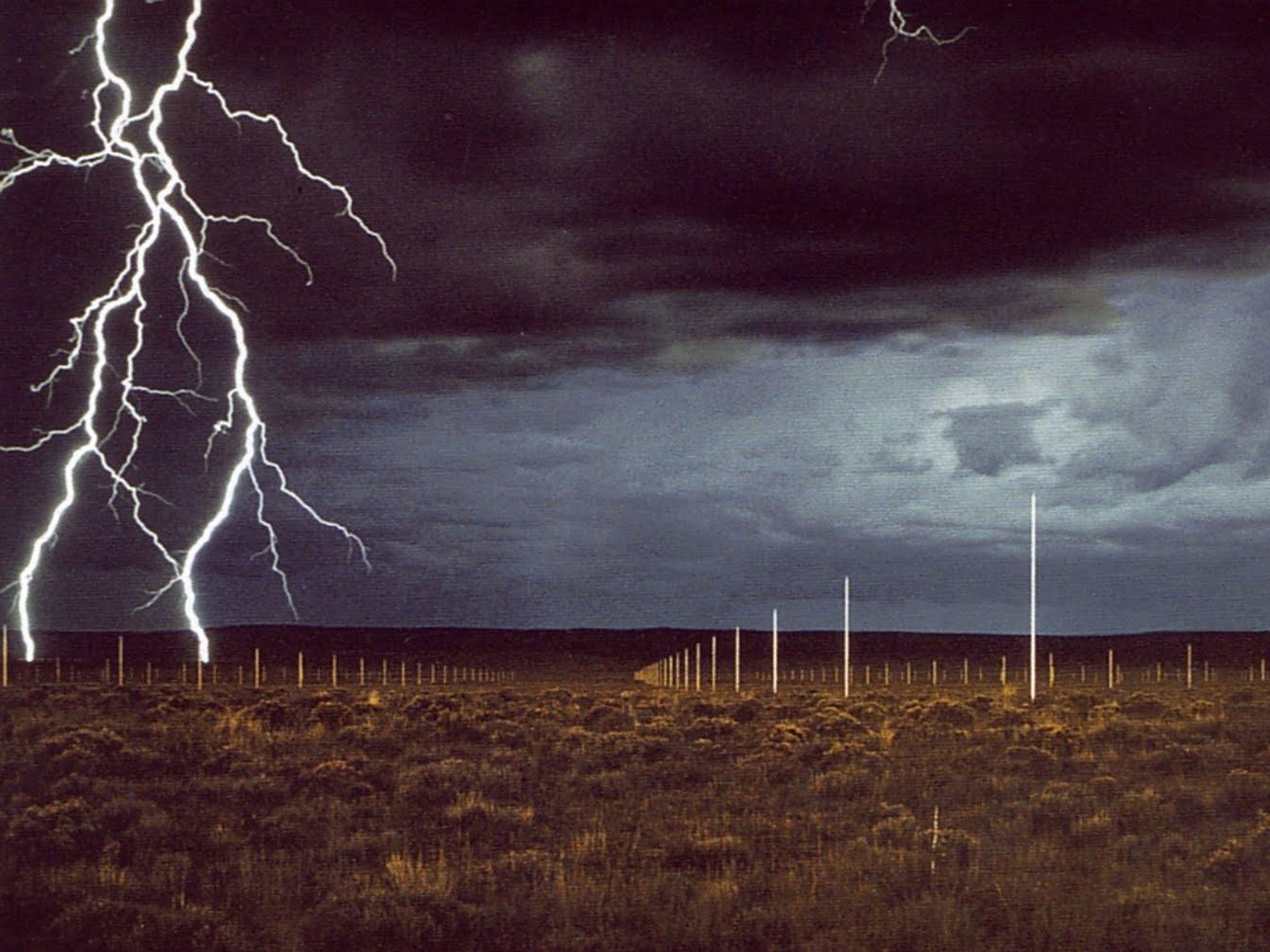Walter De Maria: Artist who forsook a career with The Velvet Underground to create electric, enigmatic installations

In the desert near Quemado, New Mexico stands a grid of 400 highly polished steel poles, each precisely 20ft 7½ins high, 220ft from the next and covering an area measuring a mile by a kilometre. Stories about these abound – that they are a CIA listening post; that they are part of the nearby Very Large Array observatory; that they are constantly being struck by lightning. None of these things is true: the poles are part of a Land art sculpture. But it was inevitable that they should lead to myth, as was the case with Walter De Maria, the man who made them.
Like his installation, called The Lightning Field, De Maria, who has died of a stroke at 77, was a figure of mystery. Everything about him was ambiguous, including the pronunciation of his name. (The stress fell on the first "a", so that "Maria" rhymed with "carrier".) Whether The Lightning Field, erected in 1977, is actually engineered to the extraordinary tolerances its maker claimed for it seems unlikely. Certainly, according to Robert Weathers, the cowboy who has tended the installation since its opening, it is hardly ever struck by lightning. Many of the stories about De Maria's life seem equally open to question.
What is known is that Walter De Maria was born near Berkeley, California in 1935, the son of an Italian-American restaurant owner. A shy child, he studied the piano and then, at the University of California, Berkeley, art history and painting. From there he moved across the Bay to San Francisco, joining the city's new cross-disciplinary avant garde: one friend was the composer La Monte Young, with whom De Maria collaborated in early Happenings. (In 1966, he would make Instrument for La Monte Young, "a sound sculpture for performance with amplification and acoustical design.") Around this time, too, De Maria married, although the marriage did not thrive and quickly ended in divorce.
The breakthrough in De Maria's work came in 1960, when, not quite 25, he moved to New York. Manhattan was the birthplace of the happening, the brainchild of Allan Kaprow (Obituaries, 17 April 2006). In 1962, Kaprow, De Maria and the future latex sculptor Eva Hesse organised a happening of their own, with Hesse dressed as a chicken. De Maria's taste for performance took other forms as well.
In 1965 or 1966 – the artist claimed, convincingly, not to be able to remember which – he joined a rock band called The Primitives, shortly to change its name to the hipper-sounding Velvet Underground. Enthusiastic at first, De Maria, by then a percussionist, soon tired of dragging his drums around the New York bar scene. He also wearied of the freewheeling style of the band's leader, Lou Reed. "I said to myself, do I want to go to rehearsal every day and every night, you know, take all these drugs?" De Maria later recalled. He decided not. Shortly after he left The Velvet Underground, the band was taken up by Andy Warhol.
This bad timing did not harm De Maria's career noticeably. In 1966, in the mode of Instrument for La Monte Young, he made a tall, thin stainless steel sculpture called Cage, named for the composer, John. If this is now recorded as an early piece of Minimalism, it also led directly, portrait to landscape, to the polished steel poles of The Lightning Field.
Like his fellow Dia protégé, Donald Judd, De Maria specialised in playing human perfection off against natural imperfection. Thus Vertical Earth Kilometre, a thousand-metre brass rod drilled into the earth below a park in Kassel, Germany, of which only one end, flat and two inches in diameter, is visible at ground level. As with The Lightning Field, the feel is both monumental and apocalyptic, as if De Maria is anticipating the day when Man's ingenuity has led to his extinction. This recipe was reversed in The New York Earth Room, also of 1977, in which one floor of a house in Wooster Street, Manhattan, was filled with earth to a depth of 22 inches. Standing on what is, in effect, an inside-out mudflat remains a disquieting experience.
Although De Maria's understanding of epic scale marked him, at heart, as an American sculptor, his grasp of self-promotion did not. Many US artists of his generation claimed to be publicity-averse while quietly playing the market when no-one was looking. De Maria, genuinely shy, was steadfast in his avoidance of interviews and gallery openings.
He described the New York art scene as "a hundred people pillow-fighting each other blindfold and swinging knives instead of pillows." True to his word, he shunned it. Asked to take part in an exhibition in Switzerland in 1969, he sent a black telephone to which was attached a card printed with the words, "If this telephone rings, you may answer it. Walter De Maria is on the line and would like to talk to you." It never rang.
As a result of all this, and in spite of the vastness of his US Land art pieces, De Maria became better known outside America than in it. In 1989, he made Monument to the Bicentennial of the French Revolution, a huge sphere of polished granite that now stands outside the Assemblée Nationale in Paris. The Germans and Japanese were particular fans of his brand of well-engineered Romanticism. In private as in public, De Maria remained a minimalist, keeping himself to to himself and never re-marrying after his early foray into matrimony. He died suddenly, of a stroke, in Los Angeles, there to celebrate the birthday of his 100-year-old mother.
Charles Darwent
Walter Joseph De Maria, sculptor and rock musician: born Albany, California 1 October 1935; married Susanna Wilson (divorced); died Los Angeles 25 July 2013.
Join our commenting forum
Join thought-provoking conversations, follow other Independent readers and see their replies
Comments